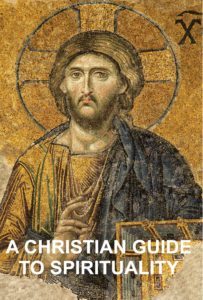Stephen W. Hiemstra's Blog, page 106
August 27, 2021
Resumen de las Disciplinas Espirituales

Por Stephen W. Hiemstra
Las disciplinas espirituales nos ayudan a responder la pregunta: ¿Cómo sabemos? Debido a que no podemos construir una torre física ni metafórica hacia Dios, especialmente desde Pentecostés (Gen 11:1-9; Hch 2:1-4), Dios mismo en su Espíritu Santo ha trabajado con nosotros para responder a esta pregunta. A veces nos referimos a esto como el proceso de santificación (Flp 3:7-11).
Las disciplinas espirituales pueden servir por lo menos tres objetivos. Un objetivo es ayudar a eliminar los obstáculos que afectan nuestra relación con Dios —así como el pecado. Otro objetivo es responder a una ruta especial de gracia que Dios nos ha dado únicamente a nosotros. Un objetivo más es facilitar el proceso de reconciliación con aquellos contra quienes hemos pecado.
Por ejemplo, la oración contemplativa se enfoca en reducir obstáculos en nuestra relación con Dios. Foster (1992, 161-164) ve tres pasos en la oración contemplativa: recolección (concentrando nuestras mentes a estar completamente en el presente), tranquilizar nuestros espíritus, y el éxtasis espiritual —la respuesta de Dios.
En contraste, Thomas (2010, 7, 83, 211) ve nueve tipos de personalidades espirituales que nos trae a la gracia de Dios. Estos son: naturalistas, sensualistas, tradicionalistas, ascetas, activistas, cuidadores, aficionados, contemplativos, e intelectuales. Por ejemplo, el tradicionalista experimenta a Dios a través de tres elementos principales: ritos, símbolos, y sacrificios. En contraste, para los intelectuales, el sermón no es solo una parte de la adoración —es adoración.
El proceso de reconciliación raramente es tratado como una disciplina espiritual independiente, pero debe tenerse en cuenta en muchas disciplinas e incluso parte del gobierno de la iglesia. Lo vemos articulado, en parte, en el servicio cristiano, en relaciones de trabajo, nuestros matrimonios, nuestros grupos pequeños, y nuestra adoración. Si las disciplinas espirituales se clasifican en orden de necesidad, la reconciliación se puede catalogar claramente en la parte superior de la lista.
Para los presbiterianos, la reconciliación se destaca mediante el gobierno de la iglesia, a través de decisiones de grupo. Casi todas las decisiones en la vida de la iglesia requieren la aprobación o la supervisión de un comité. Al incluir la reconciliación en el proceso de decisión, se minimiza la necesidad de practicar una disciplina espiritual adicional. Sin embargo, cuando surgen problemas especiales, la reconciliación puede ser un proceso separado del cual nos referimos como «hacer la paz» (Rom 12:18; Sande 2004, 22).
Referencias
Foster, Richard J., 1992. Prayer: Find the Heat’s True Home. New York: HarperOne.
Sande, Ken. 2004. The Peace Maker: A Biblical Guide to Resolving Personal Conflict. Grand Rapids, MI: BakerBooks.
Thomas, Gary. 2010. Sacred Pathways: Discover Your Soul’s Path to God. Grand Rapids, MI: Zondervan.
Resumen de las Disciplinas Espirituales
Ver también:
Prefacio de La Guía Cristiana a la Espiritualidad
Otras formas de participar en línea:
Sitio del autor: http://www.StephenWHiemstra.net
Comprar Libro: http://www.T2Pneuma.com
Boletín informativo: https://bit.ly/Urn_2021
The post Resumen de las Disciplinas Espirituales appeared first on T2Pneuma.net.
Überblick über spirituelle Disziplinen

Vor Stephen W. Hiemstra
Spirituelle Disziplinen helfen uns, die Frage zu beantworten: Woher wissen wir?Weil wir weder einen physischen noch einen metaphorischen Turm zu Gott bauen können, besonders seit Pfingsten (Gen 11:1-9; Acts 2:1-4), hat Gott selbst in seinem Heiligen Geist mit uns in den spirituellen Disziplinen zusammengearbeitet, um diese Frage zu antworten. Dies wird manchmal als der Prozess der Heiligung bezeichnet (Phil 3:7-11).
Spirituelle Disziplinen können mindestens drei Zielen dienen. Ein Ziel ist es, Hindernisse zu beseitigen, die unsere Beziehung zu Gott beeinträchtigen-–Dinge wie Sünde. Ein weiteres Ziel ist es, auf einen besonderen Gnadenweg zu reagieren, den Gott uns auf einzigartige Weise gegeben hat. Ein weiteres Ziel besteht darin, den Prozess der Versöhnung mit denen zu erleichtern, gegen die wir gesündigt haben.
Zum Beispiel konzentriert sich das kontemplative Gebet darauf, Hindernisse für unsere Beziehung zu Gott abzubauen. Foster (1992, 161–164) sieht drei Schritte im kontemplativen Gebet: Erinnerung (Konzentration unseres Geistes, um vollständig präsent zu werden), Beruhigung unseres Geistes, und spirituelle Ekstase–Gottes Antwort.
Im Gegensatz dazu sieht Thomas (2010, 7, 83, 211) neun spirituelle Persönlichkeitstypen, die uns zur Gnade Gottes führen. Dies sind: Naturforscher, Sensationen, Traditionalisten, Asketen, Aktivisten, Betreuer, Enthusiasten, Kontemplative, und Intellektuelle. Zum Beispiel erlebt der Traditionalist Gott durch drei Hauptelemente: Ritual, Symbol, und Opfer. Im Gegensatz dazu ist die Predigt für Intellektuelle nicht nur ein Teil der Anbetung–sie ist Anbetung.
Der Versöhnungsprozess wird selten als separate spirituelle Disziplin behandelt, muss jedoch in viele Disziplinen einfließen und kann sogar Teil der Kirchenleitung sein. Wir sehen es zum Teil im christlichen Dienst, in Arbeitsbeziehungen, in unseren Ehen, in unseren Kleingruppen und in unserer Anbetung angesprochen. Wenn die spirituellen Disziplinen von Bedarf geordnet werden, würde die Versöhnung eindeutig ganz oben auf der Liste stehen.
Für Presbyterianer betont die Kirchenleitung die Versöhnung durch Gruppenentscheidungen. Fast jede Entscheidung im Gemeindeleben erfordert die Zustimmung und Aufsicht des Ausschusses. Indem Versöhnung in grundlegende Entscheidungsprozesse eingebaut wird, wird die Notwendigkeit, eine bestimmte spirituelle Disziplin zu praktizieren, dementsprechend minimiert. Wenn jedoch besondere Probleme auftreten, kann die Versöhnung ein gesondert hervorgehobener Prozess sein, der manchmal als Friedensstiftung bezeichnet wird (Rom 12:18; Sande 2004, 22).
VerweiseFoster, Richard J., 1992. Prayer: Find the Heat’s True Home. New York: HarperOne.
Sande, Ken. 2004. The Peace Maker: A Biblical Guide to Resolving Personal Conflict. Grand Rapids, MI: BakerBooks.
Thomas, Gary. 2010. Sacred Pathways: Discover Your Soul’s Path to God. Grand Rapids, MI: Zondervan.
Überblick über spirituelle DisziplinenSiehe auch: Einleitung auf Ein Christlicher Leitfaden zur Spiritualität Andere Möglichkeiten, sich online zu engagieren:Autoren Seite: http://www.StephenWHiemstra.net Herausgeber Seite: http://www.T2Pneuma.com Mitteilungsblatt: https://bit.ly/Urn_2021The post Überblick über spirituelle Disziplinen appeared first on T2Pneuma.net.
August 24, 2021
Penn Whispers to Speakers

Joanna Penn. 2014. Public Speaking for Authors, Creatives, and Other Introverts. UK: Creative Penn Limited.
Review by Stephen W. Hiemstra
In analyzing the results of the launch of my first book last month, a surprising finding emerged. While my online sales were frustratingly few, sales during personal appearances were stronger than for typical authors [1]. The question then came up: should I be speaking more? And what should such speaking look like? When I stumbled across Joanna Penn’s book, Public Speaking for Authors, Creatives, and Other Introverts, I immediately ordered a copy.
Background as SpeakerMind you, I have been speaking publicly for most of my professional life, both as an economist and as a pastor. However, economists typically address audiences of other economists and pastors typically address a familiar congregation. In neither case is the audience wholly unfamiliar; in both cases the audience response is fairly gracious of what is being presented [2]. Public speaking to unfamiliar audience to speak about a book is a bit more out there than I am accustomed to.
Organization of BookPenn states her writing objective as follows: In this book, I’ll share everything that I know as a professional speaker and introvert (11). She breaks this objective down into 4 parts:
The practicalities of speaking;The psychological aspects of speaking;The business side; andInterviews with professional speakers (11).In other words, this book focuses on things that speakers do and worry about; it does not focus on how to write and deliver good speeches.
The MixAn important point in my own choice of this book is that Penn straddles 2 worlds: public speaking and book writing and publishing. While there is a lot of overlap these days between these 2 worlds—speakers that write (politicians, for example) and writers that speak (best-selling authors that do appearances)—the mechanics of these 2 professional realms are filled with thousands of unwritten rules, details, and networking requirements. If the subject matter were different, an entirely different set of observations would arise. Think of the worlds of IT gurus or sports figures or film stars. Penn’s niche and expertise speaks specifically into my space as a writer/publisher.
AudiencePenn drills down into her audience a bit deeper by focusing on the fears and anxieties of “introverts” and “creatives”. In some sense, she is carving out a niche here with not just authors, but authors focused on creative writing. Perhaps even more specifically female, creative writers (17-19) [3].
Types of SpeakingTwo sections of the book were of special interest to me. The first focused on 6 types of speaking. Penn lists those as:
Keynote/Inspirational speaking;Content speaking;Workshop presenting/facilitating;Mc/Event chair;Chair of panel or panelist; andReader/performer of your own work (24-25).I suppose that an author presenting their own work might fit into most of these types, depending on the work. One type of speaking on my mind as I read the book is not on the list: radio interviewing.
Role for VideoThe second section of special interest to me was her discussion of using video. For example, Penn sees 6 uses for video:
Self-improvement tool;Evidence of speaking ability;Bonus material for spicing up sessions;Testimonials;Marketing; andPremium product for customers (133-134)Although I have produced a number of You-Tube videos for Leader and Media Guides [4] to promote my book, video remains a source of anxiety for me [5]. Seeing the scope of use for video helps to reduce anxiety by demonstrating the range and real value of their use.
AIDA PrinciplePenn’s background in marketing broke through in her comments on social media. She cites the AIDA principle:
Attention. Social media content lets people know you exist and what you do. Hopefully, your content is interesting and informativeInterest. Once people know you exist, they have to know how to find you.Desire. Once people know that you exist, they need to know that they can trust you. Are you authentic or simply interested in attention?Action. Once people know you, how to find you, and trust you, then when an appropriate occasion arises they may turn to you for advice and products (129-130).AIDA makes sense not only in social media, pastors effectively use it by practicing a “ministry of presence”. It also works with animals, like horses [6].
AssessmentJoanna Penn’s Public Speaking for Authors, Creatives, and Other Introverts is a real gem. Over the years I have read a number of books on public speaking—most on preaching—and this is the first book with real value added in terms of what speakers worry about most—the zillions of details where things go wrong or should be prepared for in advance. Penn is obviously very readable. Authors should take special note.
Footnotes[1] Members of my book club reported that the industry average number of sales for a public book signing was 3 books. My first two appearances resulted in sales of 8 and 10 books.
[2] Economists sometimes talk about the “prisoner’s dilemma”. Prisoners informally agree without consultation not to “rat each other out”, in part, because of the threat of retaliation in kind. Economists may seem to be a tough bunch to present in front of because of all the tough questions, but the informal agreement usually is to limit questions to the topic at hand—no ad hominem (personal) attacks.
[3] Penn lists her Myers Briggs type as INFJ (18). This is surprising because her book abounds with details—a big selling point for readers and a classic flag for a sensate personality, not intuitive personality—more like an ISFJ.
[4] Check out T2Pneuma.com.
[5] To borrow a phrase from Garrison Keillor, I am particularly shy of video and Skype where my “face made for radio” might be a liability hard to control for.
[6] A film called The Horse Whisperer (1998) staring Robert Redford and Kristin Scott Thomas, employed a ministry of presence to calm frightened horses (http://en.wikipedia.org/wiki/The_Hors...).
Penn Whispers to SpeakersAlso see:Books, Films, and MinistryOther ways to engage online:Author site: http://www.StephenWHiemstra.netPublisher site: http://www.T2Pneuma.com Newsletter: https://bit.ly/Urn_2021
The post Penn Whispers to Speakers appeared first on T2Pneuma.net.
August 23, 2021
Do not Covet: Monday Monologues (podcast) August 23, 2021

By Stephen W. Hiemstra
This morning I will share a prayer and reflect on the Tenth Commandment, Do not Cover. After listening, please click here to take a brief listener survey (10 questions).
To listen, click on this link.
Hear the words; Walk the steps; Experience the joy!
Do not Covet: Monday Monologues (podcast) August 23, 2021
Also see:
Monday Monologue On March 26, 2018
Other ways to engage online:
Author site: http://www.StephenWHiemstra.net,
Publisher site: http://www.T2Pneuma.com.
Newsletter: https://bit.ly/Urn_2021
The post Do not Covet: Monday Monologues (podcast) August 23, 2021 appeared first on T2Pneuma.net.
August 22, 2021
Prayer Day 40
By Stephen W. Hiemstra
Loving Father.
You clothe the birds that neither spin or reap (Matt 6:26).
You send the rain and the sunshine on the just and the unjust without discrimination (Matt 5:45).
You make the day and the night to bless us with activities and with sleep (Gen 1:5).
We cast our obsessions and addictions at your feet.
In the power of your Holy Spirit, heal our relationships and soften our hearts that we might grow more like you with each passing day.
In Jesus’ name, Amen.
Prayer Day 40
Also see:
Believer’s Prayer
Other ways to engage online:
Author site: http://www.StephenWHiemstra.net
Purchase Book: http://www.T2Pneuma.com
Newsletter: https://bit.ly/Construct_2021
The post Prayer Day 40 appeared first on T2Pneuma.net.
Oración Dia 40
Por Stephen W. Hiemstra
Padre Amoroso,
Vistes las aves que ni siegan ni recogen (Mt. 6:25-26).
Envías el sol y la lluvia sobre justos e injustos sin discriminación (Mt. 5:5).
Haces el día y la noche para bendecirnos con actividades y sueños (Gén. 1:5).
Lanzamos nuestras obsesiones y adicciones a Tus pies.
En el poder del Espíritu Santo, sana nuestras relaciones y suaviza nuestros corazones para que podamos crecer más como Tú cada día.
En el nombre de Jesús oramos. Amén.
Oración Dia 40
Ver también:
Prefacio de La Guía Cristiana a la Espiritualidad
Otras formas de participar en línea:
Sitio del autor: http://www.StephenWHiemstra.net
Comprar Libro: http://www.T2Pneuma.com
Boletín informativo: https://bit.ly/Construct_2021
The post Oración Dia 40 appeared first on T2Pneuma.net.
Gebetstag 40

Vor Stephen W. Hiemstra
Geliebter Vater,
Du ernährst die Vögel die weder säen noch ernten (Matt 6:26).
Du schickst den Regen und die Sonne unterschiedslos auf Gerechte und Ungerechte (Matt 5:45).
Du machst den Tag und die Nacht, um uns mit Aktivitäten und mit Schlaf zu segnen (Gen 1:5).
Wir treiben unsere Besessenheiten und Süchte zu deinen Füßen aus.
Heile in der Kraft deines Heiligen Geistes unsere Beziehungen und erweiche unsere Herzen, damit wir dir mit jedem Tag ähnlicher werden.
In Jesu Namens, Amen.
Gebetstag 40
Siehe auch:
Einleitung auf Ein Christlicher Leitfaden zur Spiritualität
Andere Möglichkeiten, sich online zu engagieren:
Autoren Seite: http://www.StephenWHiemstra.net
Herausgeber Seite: http://www.T2Pneuma.com
Mitteilungsblatt: https://bit.ly/Construct_2021
The post Gebetstag 40 appeared first on T2Pneuma.net.
August 20, 2021
Do Not Covet (Tenth Commandment)

And you shall not covet your neighbor’s wife. And you shall not desire your neighbor’s house, his field, or his male servant, or his female servant, his ox, or his donkey, or anything that is your neighbor’s. (Deut 5:21) [1]
By Stephen W. Hiemstra
How many marriages and families have been destroyed over the years by the love of money? Disagreements over money are often cited as a leading cause of divorce.
Covetness is a cross between greed and envy. Greed is an extreme desire to possess something, while envy is an extreme desire that someone else not possess that which we desire. In either case, our desires lead us to treat others badly.
Both greed and envy are among the seven deadly (mortal) sins popularized by Thomas Aquinas in the twelfth century. Aquinas listed these as pride (vainglory), envy, anger, sloth (spiritual apathy), greed, gluttony, and lust [2]. He described them as capital sins because they lead to other sins and are the opposite of particular virtues (Aquinas 2003, 317–20). Just as virtue is an ongoing good character trait, a vice is an ongoing bad character trait.
Jesus coined a new word for covetness (mammon) when he said: “Ye cannot serve God and mammon.” [3]
The King James Version (KJV) of the Bible transliterates the Greek word, mammon, which may also be translated as the god of money. The apostle Paul preferred to refer to covetness as the love of money. For example, Paul wrote:
For the love of money is a root of all kinds of evil. Some people, eager for money, have wandered from the faith and pierced themselves with many griefs. (1 Tim 6:10 NIV)
While covetness is a vice that causes relational difficulties, mammon is also idolatry. Something becomes idolatrous—becomes a god—when we love it more than God. Jesus warns us:
No one can serve two masters, for either he will hate the one and love the other, or he will be devoted to the one and despise the other. (Matt 6:24)
Here we enter the realm of obsession and addiction as slaves of sin (John 8:34). We can be addicted to almost anything. Gerald May (1988, 14) writes: “addiction is a state of compulsion, obsession, or preoccupation that enslaves a person’s will and desire.” Two tests can be applied to potentially addictive behavior. Does the behavior disrupt relationships with the people closest to you? Do you experience withdrawal symptoms when you give it up? In this context, do you think covetness can rise to the level of addiction?
Henry Cloud (2008, 154) has an interesting suggestion for dealing with pain: “Look at the misery and then make a personal rule that will keep it from happening.” In this case, God has seen the pain in our lives and has given us a rule: don’t covet.
More generally, the Ten Commandments do three things: they reduce our pain, they simplify our lives, and they help us to model ourselves after the One who we claim to follow.
Footnotes
[1] Also: Exod 20:17; Deut 7:25; Rom 7:7; Rom 13:9.
[2] The seven deadly sin are often described using their Latin names. Those are superbia (pride), invidia (envy), ira (anger), gula (gluttony), luxuria (lust), avarita (greed), and accidia (sloth) (Fairlie, 2006, iv).
[3] Luke 16:13 KJV; Matt 6:24 KJV.
Referencies
Aquinas, Thomas. 2003. On Evil (Orig Pub 1270). Translated by Richard Regan. Edited by Brian Davies. New York: Oxford University Press.
Cloud, Henry. 2008. The One-Life Solution: Reclaim Your Personal Life While Achieving Greater Personal Success. New York: Harper.
Fairlie, Henry. 2006. The Seven Deadly Sins Today (Orig Pub 1978). Notre Dame, IN: University of Notre Dame Press.
May, Gerald G. 1988. Addiction and Grace: Love and Spirituality in the Healing of Addictions. New York: HarperOne.
Do Not Covet (Tenth Commandment)
Also see:
Preface to A Christian Guide to Spirituality
Other ways to engage online:
Author site: http://www.StephenWHiemstra.net
Purchase Book: http://www.T2Pneuma.com
Newsletter: https://bit.ly/Construct_2021
The post Do Not Covet (Tenth Commandment) appeared first on T2Pneuma.net.
No Codiciarás (El Décimo Mandamiento)

“No codiciarás la mujer de tu prójimo, y no desearás la casa de tu prójimo, ni su campo, ni su siervo, ni su sierva, ni su buey, ni su asno, ni nada que sea de tu prójimo.” (Deut 5:21 NBH) [1]
Por Stephen W. Hiemstra
¿Cuantos matrimonios y familias han sido destruido durante los años por ama de plata? Desacuerdos acerca de plata se citan frecuentemente como una causa principal de divorció.
La codicia es un cruce entre avaricia y envidia. Avaricia es un deseo extremo a poseer algo mientras envidia es un deseo extremo que alguien otra no poseer lo que deseamos. En cualquier caso, nuestros deseos nos llevan tratar mal a los demás.
Tanto avaricia y envidia son entre los siete pecados mortales popularizados por Tomás de Aquino en el siglo duodécimo. Aquino los enumeró como el orgullo (vanagloria), la envidia, la ira, la pereza (apatía espiritual), la avaricia, la gula y la lujuria [2]. Los describe como pecados capitales porque conducen a otros pecados y son lo contrario de virtudes particulares (Aquinas 2003, 317-20). Del mismo modo que virtud es un buen rasgo de carácter permanente, un vicio es un mal rasgo de carácter permanente.
Jesús acuñó un palabra nueva por la codicia (mamona) cuando dijo: “No pueden servir a Dios y a las riquezas (mamona).” [3]. En Ingles, el King James Versión (KJV) de la Biblia translitera el griego, mamona, que pueda también ser traducir como el dios de dinero. El Apóstol Pablo prefiere a referir a codicia como el amor de dinero. Por ejemplo, Pablo escribió:
Porque la raíz de todos los males es el amor al dinero, por el cual, codiciándolo algunos, se extraviaron de la fe y se torturaron con muchos dolores. (1Tim 6:10 NBH)
Mientras codicia es un vicio que causa dificultades relaciones, mamona es también idolatría. Algo se convierte idolatrías—convertir a un dios—cuando lo amamos más que Dios. Jesús nos advierto:
Nadie puede servir a dos señores; porque o aborrecerá a uno y amará al otro, o apreciará a uno y despreciará al otro. Ustedes no pueden servir a Dios y a las riquezas. (Matt 6:24 NBH)
Aquí entramos el terreno de obsesión y adicción como esclavos del pecado (John 8:34). Podemos ser adicto a casi cualquiera cosa. Gerald May (1988, 14) escribe: “adicción es un estado de compulsión, obsesión o preocupación que esclaviza la voluntad y deseo de una persona” [4]. Dos pruebas pueda ser aplicado a conducta potencialmente aditiva. ¿Interrumpe este comportamiento las relaciones con las persona más cercano de ti? ¿Es usted experimenta síntomas de abstinencia cuando usted lo da para arriba? En este contexto, piensas que la codicia pueda elevarse a la nivel de adicción?
Henry Cloud (2008, 154) tiene una sugerencia interesante para lidiar con el dolor: “Mirar al miseria y entonces hacer una regla personal que lo guardara de pasando.” [5] En este caso, Dios ha visto el dolor en nuestras vidas y nos ha dado una regla: no codician.
De manera más general, los Diez Mandamientos hacen tres cosas: reduce nuestro dolor, simplifica nuestras vidas, y ayudamos a nos modelar a nosotros mismos después de Aquel que reclamamos a seguir.
Notas
[1] También: Exod 20:17; Deut 7:25; Rom 7:7; Rom 13:9.
[2] Los siete pecados mortales son frecuentemente describe usando su nombres de Latín. Ellos son superbia (orgullo), invidia (envidia), ira, gula, luxuria (lujuria), avarita (avaricia), and accidia (pereza) (Fairlie, 2006, iv).
[3] Luke 16:13; Matt 6:24.
[4] “addiction is a state of compulsion, obsession, or preoccupation that enslaves a person’s will and desire.”
[5] “Look at the misery and then make a personal rule that will keep it from happening.”
Referencias
Aquinas, Thomas. 2003. On Evil (Orig Pub 1270). Translated by Richard Regan. Edited by Brian Davies. New York: Oxford University Press.
Cloud, Henry. 2008. The One-Life Solution: Reclaim Your Personal Life While Achieving Greater Personal Success. New York: Harper.
Fairlie, Henry. 2006. The Seven Deadly Sins Today (Orig Pub 1978). Notre Dame, IN: University of Notre Dame Press.
May, Gerald G. 1988. Addiction and Grace: Love and Spirituality in the Healing of Addictions. New York: HarperOne.
No Codiciarás (El Décimo Mandamiento)
Ver también:
Prefacio de La Guía Cristiana a la Espiritualidad
Otras formas de participar en línea:
Sitio del autor: http://www.StephenWHiemstra.net
Comprar Libro: http://www.T2Pneuma.com
Boletín informativo: https://bit.ly/Construct_2021
The post No Codiciarás (El Décimo Mandamiento) appeared first on T2Pneuma.net.
Begehre Nicht (Zehntes Gebot)

Vor Stephen W. Hiemstra
Du sollst nicht begehren deines Nächsten Frau.
Du sollst nicht begehren deines Nächsten Haus,
Acker, Knecht, Magd, Rind, Esel noch alles,
was sein ist. (Deut 5:21)1
Wie viele Ehen und Familien wurden im Laufe der Jahre durch die Liebe zum Geld zerstört? Meinungsverschiedenheiten über Geld werden oft als Hauptursache für Scheidungen genannt.
Begehrlichkeit ist eine Mischung aus Gier und Neid. Gier ist ein extremer Wunsch, etwas zu besitzen, während Neid ein extremer Wunsch ist, dass jemand anderes nicht das besitzt, was wir uns wünschen. In jedem Fall führen unsere Wünsche dazu, dass wir andere schlecht behandeln.
Sowohl Gier als auch Neid gehören zu den sieben Todsünden, die im 12. Jahrhundert von Thomas von Aquin populär gemacht wurden. Aquin listete diese als Stolz (Ehrelei), Neid, Wut, Trägheit (spirituelle Apathie), Gier, Völlerei und Lust auf.2 Er bezeichnete sie als Todsünden, weil sie zu anderen Sünden führen und das Gegenteil bestimmter Tugenden sind (Aquinas 2003, 317–20). So wie Tugend ein fortwährender guter Charakterzug ist, ist ein Laster ein fortwährender schlechter Charakterzug.
Jesus prägte ein neues Wort für Begehrlichkeit (Mammon), als er sagte: “Ihr könnt nicht Gott dienen und dem Mammon.” (Luke 16:13; Matt 6:24) Die Bibel transkribierte das griechische Wort Mammon, das auch mit Geldgott übersetzt werden kann. Der Apostel Paulus bezeichnete Begehrlichkeit lieber als Geldliebe. Er schrieb:
Denn Geldgier ist eine Wurzel alles Übels; danach hat einige gelüstet und sie sind vom Glauben abgeirrt und machen sich selbst viel Schmerzen. (1 Tim 6:10)
Während Begehrlichkeit ein Laster ist, das Beziehungsschwierigkeiten verursacht, ist Mammon auch Götzendienst. Etwas wird götzendienerisch–wird zu einem Gott–wenn wir es mehr lieben als Gott. Jesus warnt uns:
Niemand kann zwei Herren dienen: Entweder er wird den einen hassen und den andern lieben, oder er wird an dem einen hängen und den andern verachten. (Matt 6:24)
Hier betreten wir das Reich der Besessenheit und Sucht als Sklaven der Sünde (John 8:34).
Wir können von fast allem süchtig sein. Gerald May (1988, 14) schreibt: “Sucht ist ein Zustand von Zwang, Besessenheit, oder Beschäftigung, der den Willen und das Verlangen einer Person versklavt.“ Zwei Prüfungen können auf potenziell süchtig machendes Verhalten angewendet werden. Unterbricht das Verhalten die Beziehungen zu den Menschen, die Ihnen am nächsten stehen? Hast du beim Aufgeben Entzugserscheinungen? Glaube in diesem Zusammenhang, dass Begehrlichkeit bis zur Sucht ansteigen kann?
Henry Cloud (2008, 154) hat einen interessanten Vorschlag zum Umgang mit Schmerz: “Schau dir das Elend an und stelle dann eine persönliche Regel auf, die es verhindert.“3
In diesem Fall hat Gott den Schmerz in unserem Leben gesehen und uns eine Regel gegeben: Begehre nicht.
Im Allgemeinen bewirken die Zehn Gebote drei Dinge: Sie lindern unseren Schmerz, sie vereinfachen unser Leben, und sie helfen uns, uns nach dem Einen zu modellieren, dem wir zu folgen behaupten.
Verweise1 Auch: Exod 20:17; Deut 7:25; Rom 7:7; Rom 13:9.
2 Die sieben Todsünden werden oft mit ihren lateinischen Namen beschrieben. Sie sind Superbia (Stolz), Invidia (Gier), Ira (Wut), Accidia (Trägheit), Luxuria (Völlerei), Avarita (Neid), und Gula (Lust; Fairlie, 2006, iv).
3 Henry Cloud (2008, 154) schrieb: “Look at the misery and then make a personal rule that will keep it from happening.”
Begehre Nicht (Zehntes Gebot)Siehe auch: Einleitung auf Ein Christlicher Leitfaden zur Spiritualität Andere Möglichkeiten, sich online zu engagieren:Autoren Seite: http://www.StephenWHiemstra.net Herausgeber Seite: http://www.T2Pneuma.com Mitteilungsblatt: https://bit.ly/Construct_2021The post Begehre Nicht (Zehntes Gebot) appeared first on T2Pneuma.net.





